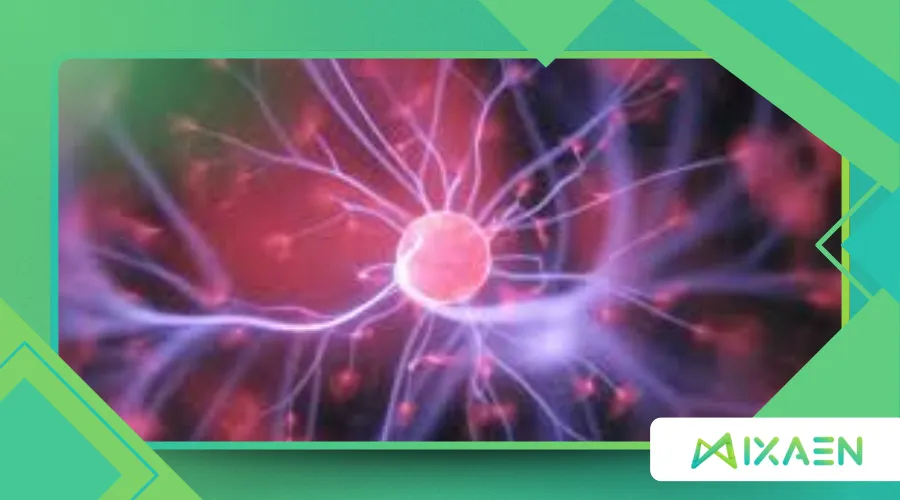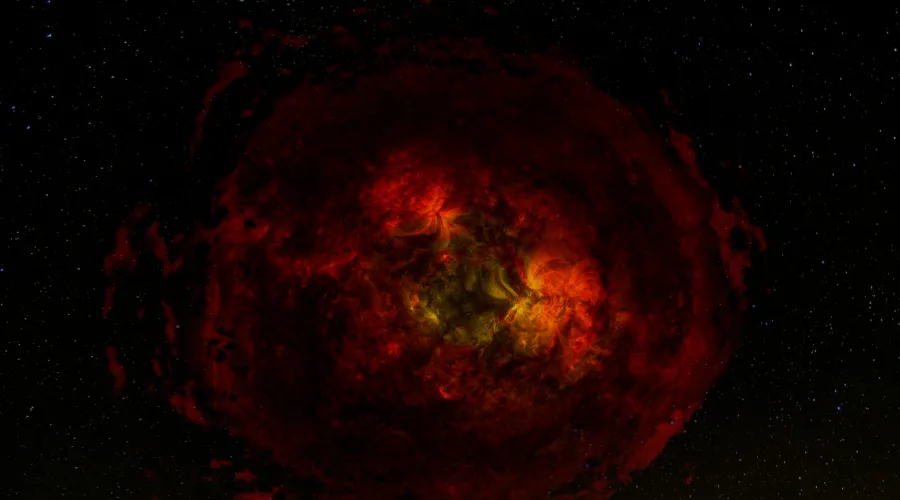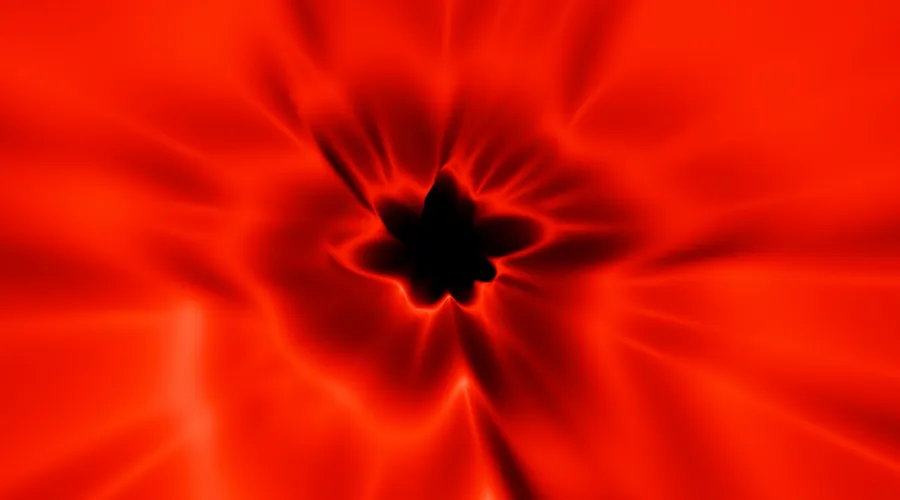The Missing Antimatter Problem: Where Did It All Go?

The missing antimatter puzzle has baffled scientists for decades, a cosmic mystery that challenges our understanding of the universe’s origins.
Anúncios
In the Big Bang, theory predicts equal amounts of matter and antimatter were created, yet our universe is overwhelmingly matter-dominated.
Where did all the antimatter go?
This question drives cutting-edge research, from particle accelerators to cosmic observations, as scientists hunt for clues to explain this profound imbalance.
Let’s dive into this enigma, exploring its implications, the latest theories, and why it matters for our cosmic story.
The Big Bang’s Equal Promise
Imagine the universe at its birth—a searing, infinite expanse where energy condensed into particles.
Theory suggests the Big Bang produced matter and antimatter in perfect symmetry.
For every quark, an anti-quark; for every electron, a positron.
When these opposites meet, they annihilate, converting into pure energy.
If the universe began with equal parts, why don’t we see antimatter galaxies or positron stars?
The absence of antimatter in observable quantities is one of cosmology’s greatest unsolved problems.
This imbalance, known as baryon asymmetry, implies something tipped the scales.
The universe’s matter surplus is tiny but significant—about one part in a billion survived annihilation.
A 2018 study from the Large Hadron Collider (LHC) measured the decay rates of particles and their antiparticles, finding no significant differences that could fully explain the asymmetry.
This leaves scientists grappling with a profound question: what mechanism favored matter over its mirror image?
Moreover, understanding this imbalance could lead to breakthroughs in both theoretical physics and cosmology, potentially reshaping our view of the universe’s evolution.
The implications extend beyond mere curiosity, as they touch upon the fundamental laws that govern all matter and energy.
Why Antimatter Matters
Antimatter isn’t just a theoretical curiosity; it’s a window into the universe’s fundamental laws.
Understanding the missing antimatter could unlock secrets about why we exist.
If matter and antimatter had perfectly canceled each other out, no galaxies, stars, or planets would have formed.
No Earth, no life.
The stakes are cosmic.
Yet, antimatter isn’t entirely absent.
It’s produced in minute quantities in natural processes like cosmic ray collisions and even in medical applications like PET scans.
Consider a hypothetical scenario: a distant galaxy made entirely of antimatter.
If it existed, its collisions with matter galaxies would produce detectable gamma rays from annihilation.
Yet, telescopes like NASA’s Fermi Gamma-ray Space Telescope have found no such signals, suggesting antimatter regions are vanishingly rare, if they exist at all.
This absence fuels the mystery, pushing researchers to explore beyond the Standard Model of particle physics.
Furthermore, the potential applications of antimatter in energy production or propulsion systems could revolutionize technology, making its study even more critical.
The quest for understanding antimatter is not merely academic; it has the potential to transform our technological landscape.
Theories on the Disappearance
Several hypotheses attempt to explain the missing antimatter, each with its own allure and challenges.
One leading idea is CP violation—where the laws of physics slightly favor matter over antimatter.
CP stands for charge-parity, a symmetry that, if broken, could allow matter to outlast its counterpart.
Experiments at facilities like CERN have confirmed CP violation in certain particles, but the effect is too small to account for the universe’s matter dominance.
Another theory posits that the missing antimatter is hidden in exotic forms, like primordial black holes or undiscovered particles.
Picture a cosmic vault, locking away antimatter in realms we can’t yet probe.
Some physicists propose that antimatter could be sequestered in isolated pockets of the universe, though no evidence supports this.
Alternatively, new physics—perhaps involving supersymmetry or extra dimensions—might hold the key, but these remain speculative without experimental confirmation.
| Theory | Core Idea | Evidence Status |
|---|---|---|
| CP Violation | Slight asymmetry in particle decay favors matter | Confirmed but insufficient to explain full asymmetry |
| Primordial Black Holes | Antimatter trapped in early universe structures | No direct evidence; theoretical |
| New Physics | Unknown particles or forces skewed balance | Speculative; awaits testing |
+ Is the Speed of Light Really Constant Across the Universe?
Additionally, ongoing research into these theories may uncover new particles or phenomena that could provide insight into the missing antimatter problem.
As experiments evolve, they may reveal unexpected results that challenge our current understanding of particle physics.

The Role of Particle Accelerators
Particle accelerators like the LHC are humanity’s best tools for probing the missing antimatter.
By smashing particles at near-light speeds, scientists recreate conditions moments after the Big Bang.
These experiments search for subtle differences in how particles and antiparticles behave.
For instance, the ALPHA experiment at CERN traps antihydrogen atoms to compare their properties with hydrogen.
So far, no significant deviations have been found, deepening the mystery.
Let’s consider a thought experiment: imagine a scientist crafting a single antihydrogen atom in a lab, only to watch it annihilate on contact with matter.
This mirrors the universe’s early chaos, where annihilation should have left nothing.
Yet, something spared a fraction of matter.
The LHC’s 2018 data showed that charm quarks and their antiparticles decay at nearly identical rates, offering no clear path to the asymmetry.
This pushes researchers to design even more precise experiments, like the upcoming High-Luminosity LHC, set to begin operations in 2029.
Moreover, the advancements made in particle accelerator technology could lead to new discoveries not only related to antimatter but also in other areas of particle physics.
These innovations may pave the way for breakthroughs that could transform our understanding of the universe.
Cosmic Clues Beyond Earth
The universe itself is a laboratory for studying the missing antimatter.
Cosmic rays—high-energy particles zipping through space—occasionally produce antimatter.
The Alpha Magnetic Spectrometer (AMS-02) on the International Space Station has detected positrons, but their origins are ambiguous, possibly from pulsars or dark matter rather than primordial antimatter.
In 2023, AMS-02 reported detecting about 0.1% of expected antimatter particles in cosmic rays, far too little to account for the missing antimatter.
Another avenue is the cosmic microwave background (CMB), the universe’s oldest light.
The CMB shows no signs of large-scale annihilation events, which would appear as distinct energy signatures.
This suggests antimatter didn’t just drift to some cosmic corner—it’s truly gone.
Could it be that the universe’s expansion itself played a role, diluting antimatter’s presence?
This idea, while intriguing, lacks a mechanism to explain the selective survival of matter.
| Observation Method | Key Finding | Implication for Missing Antimatter |
|---|---|---|
| Cosmic Rays (AMS-02) | Low antimatter detection (0.1%) | Insufficient to explain asymmetry |
| CMB Analysis | No annihilation signatures | Antimatter not segregated in universe |
Additionally, future space missions could enhance our understanding of cosmic phenomena, potentially revealing new insights into the nature of antimatter.
As technology advances, the ability to detect and analyze cosmic events will improve, offering new avenues for exploration.
++ Time and Gravity: How Mass Warps the Fabric of Spacetime
A Cosmic Analogy: The Vanishing Twin
Think of the universe as a pair of twins born in the Big Bang—matter and antimatter, identical yet opposite.
One twin, matter, grew to dominate, while the other vanished without a trace.
This vanishing twin syndrome of cosmology leaves us wondering: was antimatter’s disappearance an accident, a design, or a flaw in our understanding?
The analogy highlights the intimacy of the problem—matter and antimatter were born together, yet only one survived to tell the tale.
Furthermore, this analogy serves as a powerful reminder of the delicate balance that governs the universe, emphasizing the need for continued inquiry into the fundamental forces at play.
As we explore these questions, we may uncover deeper truths about the fabric of reality itself.

The Search for New Physics
The Standard Model, while robust, can’t fully explain the missing antimatter.
Its limitations have spurred searches for new physics.
Supersymmetry, which proposes partner particles for every known particle, could introduce new forms of CP violation.
However, the LHC has yet to find supersymmetric particles, tempering enthusiasm.
Another idea involves leptogenesis, where an asymmetry in leptons (like electrons) later influenced baryons (like protons).
This theory is promising but requires particles heavier than current accelerators can probe.
Consider a futuristic telescope detecting a faint signal of an unknown particle decaying asymmetrically.
Such a discovery could rewrite physics, offering a clue to the missing antimatter.
While speculative, it underscores the need for innovative tools, like next-generation neutrino detectors or space-based observatories, to push beyond current limits.
Moreover, the pursuit of new physics could lead to revolutionary technologies and insights that reshape our understanding of the universe.
As researchers continue to explore these frontiers, the potential for groundbreaking discoveries remains vast.
Why Does It Matter to Us?
Why should the average person care about the missing antimatter?
Beyond intellectual curiosity, solving this puzzle could redefine technology and our place in the cosmos.
Antimatter’s energy potential is immense—its annihilation with matter converts 100% of mass to energy, far surpassing nuclear reactions.
Understanding its scarcity could lead to breakthroughs in energy or propulsion, though practical applications remain distant.
More immediately, the quest drives innovation in particle physics, benefiting fields from medicine to computing.
The missing antimatter also challenges our philosophical view of existence.
If the universe favored matter by chance, are we here by cosmic luck?
This question engages both scientists and dreamers, connecting the abstract to the human.
The search for answers unites disciplines, from theoretical physics to astrophysics, in a shared pursuit of truth.
Additionally, the implications of antimatter research extend to practical applications, such as advancements in medical imaging and treatments.
As we unravel the mysteries of antimatter, we may discover new technologies that enhance our quality of life.
For further reading on antimatter and its implications, check out Scientific American.
The Road Ahead
The hunt for the missing antimatter continues with relentless curiosity.
Upcoming experiments, like the Deep Underground Neutrino Experiment (DUNE), aim to probe CP violation in neutrinos, potentially revealing new asymmetries.
Meanwhile, theoretical work explores bold ideas, from extra dimensions to quantum gravity, that could reshape our understanding.
Each step forward narrows the gap, but the mystery persists, a reminder of how much we’ve yet to learn.
In this cosmic detective story, every clue counts.
The missing antimatter isn’t just a gap in our knowledge—it’s a challenge to rethink the universe’s rules.
As we peer into the cosmos and smash particles in labs, we’re not just chasing antimatter; we’re chasing the story of why we’re here.
What secrets will the universe reveal next?
Moreover, as we advance our understanding of antimatter, we may uncover new avenues for exploration that challenge our fundamental perceptions of reality.
The journey ahead promises to be as exciting as it is enlightening.
